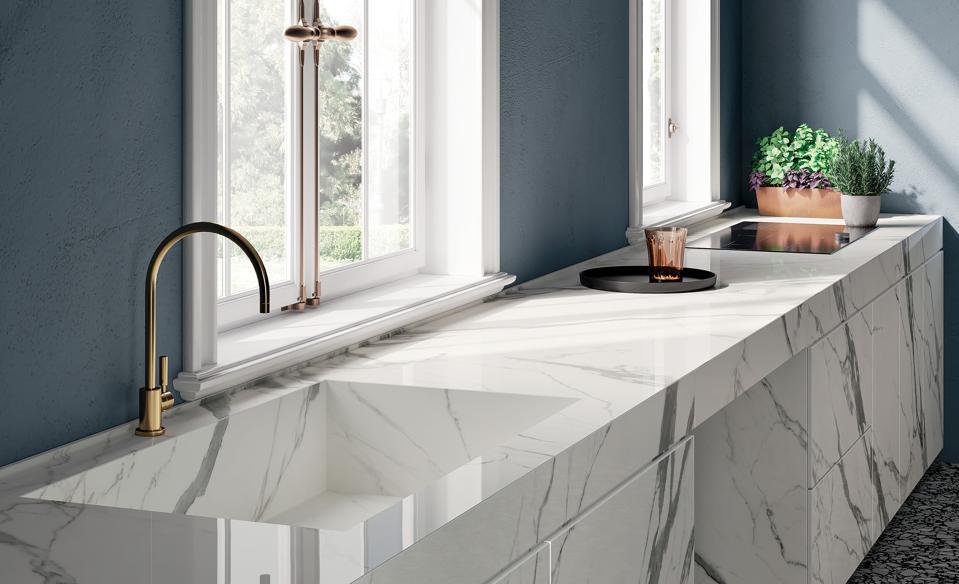Earth Day will be celebrated this year on Saturday, and it brings some good news for environmental advocates: Homeowners are starting to prioritize sustainability in their new construction and renovation projects, as observed in the latest American Society of Interior Designers report, published in February.
For many years, this aspiration frequently gave way to budget constraints, as so many of the products that supported the goal of a healthier planet cost more for purchasers weighing many competing project needs. Perhaps because of more mainstream media coverage, more natural disasters linked to climate change, or a growing number of Millennial homeowners, “Consumers are placing increasing emphasis on sustainability as a value guiding their purchasing choices, with increasing numbers of consumers saying they are willing to pay a purchase premium for sustainability,” the ASID report noted.
This has positive ramifications not just for the planet, but for the well-being of the people who live in these improved homes. “Sustainability and wellness are very closely linked,” commented New York-based interior designer Isfira Jensen in the Interior Design Community Facebook group. “Things that are harmful for people are, in most cases, just as harmful for the living organisms in the ecosystem. The reverse happens to also be true,” she noted. These are some of the major areas where the two converge.
Sustainable Materials
“The use of eco-friendly and high-efficiency products not only helps reduce our impact on the environment, but also improves things like indoor air quality through the reduction of constant exposure to toxins (materials containing chemical byproducts and formaldehyde),” Jensen explained in her remarks.
Many designers educate their residential clients on these products and avoid specifying them whenever they can. “While we craft our clients’ interiors based on their needs and lifestyle, we systemically prescribe healthy materials and sustainably conceived products. From paint, to flooring, to work surfaces, to furniture, to appliances, every aspect of a design project is conceived to promote a healthier way of living without compromising on the functionality and practicality of the space,” commented Chicago based interior designer Dijana Savic-Jambert in Facebook’s Wellness Designed group for professionals.
Her team favors ethically sourced ceramic or porcelain and FSC certified wood flooring over the widely popular luxury vinyl tile (LVT), given that material’s vinyl chloride composition, which can be hazardous to workers and, potentially, to homeowners, Savic-Jambert noted. (Some of this risk is associated with another component, phthalates, which the industry has worked to reduce with more phthalate-free LVT offerings.)
Charmain Bibby of British Columbia shard a preference for sustainable cork flooring, which is also a wellness material that is soft underfoot and allergen-free. The designer noted on her blog, “Cork is also a great insulator and in our previous home we chose to have cork under our carpets because of its super insulating properties.” That can potentially help with heat loss and energy bill savings.
Fabrics can also off-gas, which is the occurrence of chemicals used to manufacture the material leaching into the air. Sometimes this only happens in the first days or weeks of the product being installed and ventilating the space during that interval addresses the issue. Some fabrics, carpets and other textiles can off-gas for months or years, putting the household that chose it – and future buyers of that home – at risk. “There are some beautiful fabrics out there that are sustainable and low or No VOCs. And the colors are great for clients’ mental health and energy. I love combining the two!” declared Wilmington, North Carolina-based designer Andrea Morris in Wellness Designed.
Induction Cooking Technology
Another indoor air quality concern is gas cooking surfaces. “I have noticed an increased interest in induction cooktops over natural gas ranges,” observed Ontario, Canada-based Coralee Monaghan in the same group. “This may be related to the recent media attention surrounding gas ranges and the possible link to negative health concerns and poor indoor air quality,” she added. As noted in an earlier Forbes.com article, induction has numerous wellness benefits.
Tanya Kortum Shively, a Scottsdale, Arizona-based designer and IDC Facebook group member, commented in that group, “Induction cooktops are really becoming popular now because they are so efficient, great to cook with, and do not have the danger of natural gas fumes.”
Much of the media coverage surrounding the health and environmental risks of gas cooking has focused on bans and political clashes, rather than the many benefits of induction technology, which homeowners often embrace once they’ve learned about them.
Lighting Technology
California has been one of the leaders in imposing strict energy-saving lighting standards in its regulations, and this has spurred widespread adoption of light emitting diode (LED) replacements. This, in turn, has spurred dramatic price reductions and technological advancement in LED offerings.
LEDs now regularly lead designer preferences for their ability to support better sleep with circadian technology, provide better pathway and in-drawer lighting for increased safety and accessibility, generate more light with less energy, and provide greatly-improved dimmability compared to early releases. Bibby noted in her design blog, “Did you know that LED bulbs use at least 75 percent less energy than incandescent bulbs, and last 25 times longer?” The U.S. Department of Energy backs up this extraordinary figure.
Last Words
Just as regulations made LEDs more affordable and spurred technological advancement, regulations around residential gas lines promise to do the same for induction cooking, heat pumps and other safer, healthier, more sustainable alternatives.
You can do well by the planet and the people and pets in your household — and with new government incentives, product advancements and more demand lowering prices — you may preserve your fiscal health too!
Read the full article here



